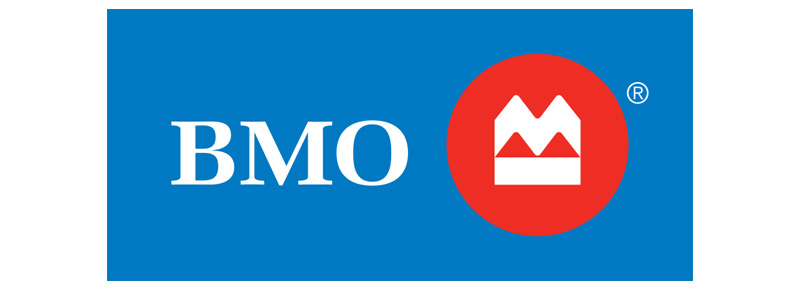From CASL to unsolicited calls: Insights for marketers
The CMA’s Director, Public Affairs and Regulatory Standards, Florentina Stancu-Soare, reached out to Steven Harroun, the Chief Compliance and Enforcement Officer at the Canadian Radio-television Telecommunications Commission (CRTC) to get a perspective on what marketers need to know about the laws and rules they enforce, and the nature of consumer complaints and other trends influencing their regulatory focus.
1. What is the role of the CRTC regarding marketing in Canada?
At the CRTC, we regulate and supervise broadcasting and telecommunications in the public interest. Our goal is for all Canadians to have access to a reliable, innovative and high-quality communications system.
I oversee our efforts to ensure that marketers and businesses comply with the Unsolicited Telecommunications Rules and Canada’s Anti-Spam Legislation (CASL)This ensures that Canadians have control over what telemarketing calls they receive and what they would like to see in their email inboxes or on their mobile devices.
The CRTC is also responsible for operations of the Spam Reporting Centre and the National Do Not Call List, where Canadians can report spam and unsolicited phone calls they receive. The complaints we receive from Canadians help inform our future policy decisions, our investigations, and identify trends we then use to inform Canadians on how to protect themselves from harmful communications.
2. Are there any current trends or issues that you have observed in the Canadian market you would like to highlight?
Many complaints tend to be seasonal. For example, businesses that engage in outdoor activities such as lawn care or home improvement will increase their marketing activities in the spring. Scams can also be seasonal, such as the CRA scam that frequently occurs during tax season.
The top three recent consumer complaints about CASL and Unsolicited Telecommunications Rules are provided in the chart below.
RECENT CONSUMER COMPLAINTS | |
Unsolicited Telecommunications Rules | CASL |
1. Received a call despite being registered on the National Do Not Call List. | 1. Did not give consent to receive the message. |
2. Received a call from telemarketers, despite requests not to be called again. | 2. No unsubscribe in the message (and related unsubscribe issues such as still receiving messages after 10 days and broken unsubscribe). |
3. Received a call from a spoofed number (usually for scam calls). The number impersonates a brand or belongs to an unrelated third-party. | 3. Never provided electronic address to the sender. |
The top five commercial and affiliate marketing complaints received by the CRTC through the Scam Reporting Centre in the past year are related to: (1) online shopping, (2) food, drug, and health, (3) home, auto, and real estate, (4) software and technology, and (5) business to business.
In the telemarketing space, the CRTC consistently sees household services, duct cleaning, HVAC, local stores and real estate as the top five complaint categories.
The CRTC posts a CASL Dashboard twice a year. The Dashboard includes the top five reported scams and the top five reported Industry complaints reported during the previous six-month period. It also covers current scam alerts and highlights issues affecting Canadians. The most recent issue of CASL Dashboard can be found here.
3. What are the laws or rules enforced by the Compliance and Enforcement sector at the CRTC that marketers need to be aware of?
The CRTC is responsible for the enforcement of the Unsolicited Telecommunications Rules and CASL. These regimes help protect Canadians from unsolicited communications by giving Canadians the choice whether to receive unsolicited telemarketing calls, as well as aim to protect the privacy of Canadians and limit nuisance calls, while still allowing legitimate telemarketing to take place. They also give the CRTC the authority to regulate the sending of commercial electronic messages (CEMs), altering transmission data in CEMs, the installation of computer programs on another person’s computer system, and enabling or facilitating violations to our regulations. Essentially, we want to ensure any of these activities can only be carried out when consent has been given by the recipient.
Marketers should be aware that if they plan on telemarketing, they must register with the National Do Not Call List and be aware of all the requirements under CASL, especially the rules pertaining to sending CEMs to Canadians.
As well, if a marketer plans to send emails or text messages promoting a product or service, they must comply with CASL. The three main requirements that must be complied with are:
- obtain consent to send the CEM;
- provide proper identification information; and
- provide a functioning unsubscribe mechanism that is simple, quick and easy for the user.
4. How does the CRTC regulate the communications ecosystem for telemarketing and spam?
The CRTC regulates telemarketing and the sending of CEMs through compliance education with businesses and individuals, by conducting investigations and, in some cases, through enforcement actions.
CRTC investigations are generally a result of complaints from Canadians regarding unwanted calls or CEMs, which if they result in violations of the Unsolicited Telecommunications Rules or CASL, can lead to monetary penalties. For example:
- Telemarketers found to be in violation of the Unsolicited Telecommunications Rules could be administered penalties of up to $1,500 for an individual and up to $15,000 for a corporation, for each violation.
- Under CASL, businesses or individuals that are found in violation could be administered penalties of up to $1,000,000 for an individual and up to $10,000,000 for a corporation, for each violation.
The CRTC can send warning letters or issue citations for less egregious violations. In some cases, we work with individuals or businesses to enter into negotiated settlements or undertakings which can lead to a lesser monetary penalty and can include requirements for a future corporate compliance program when calling Canadians or sending CEMs. The ultimate goal is to promote compliance.
5. What should marketers know about the National Do Not Call List and CASL from your view?
Marketers should know whether they have proper consent to make telemarketing calls or to contact Canadians over email or text message. This includes being sure they are not contacting Canadians registered to the Do Not Call List and obtaining express or implied consent before sending CEMs, including marketing messages, to Canadians’ devices.
Marketers making telemarketing calls to Canadians must register with the National Do Not Call List Operator. There are numerous scenarios where marketers may also be required to purchase a subscription to access telephone numbers on the National Do Not Call List. More information on who needs to purchase a subscription can be found here.
Marketers should understand and comply with the requirements of CASL, which includes obtaining proper consent before sending CEMs. These obligations must be considered when developing new marketing materials or reviewing existing business practices for communicating electronically with Canadians.
The CRTC has videos on its YouTube channel that have high-level tips and tricks regarding telemarketing and sending CEMs.As well, the CRTC has a multitude of resources to utilize when contacting Canadians for marketing purposes such as our Telemarketing in Canada guide with industry specific information, or our spam and malware webpage.
6. What is the main thing marketers should take away in order to improve their approach to compliance?
To comply, here are some tips:
For Telemarketers | CASL |
|
|
|
|
Set up ongoing corporate compliance programs. Review policies and procedures. | |
Maintain accurate records | Maintain accurate records |
If in doubt, just ask! 1-877-249-2782 (CRTC) | |
The main takeaway for marketers is to respect the rights of consumers to receive or not receive marketing communications over the phone or by email. Comply with the National Do Not Call List, answer questions from consumers in a clear manner, and provide instructions about how to unsubscribe from CEMs. Through communication and transparency, marketers can foster communication practices with Canadians. For more information, review these compliance tips and visit our website at crtc.gc.ca.



































